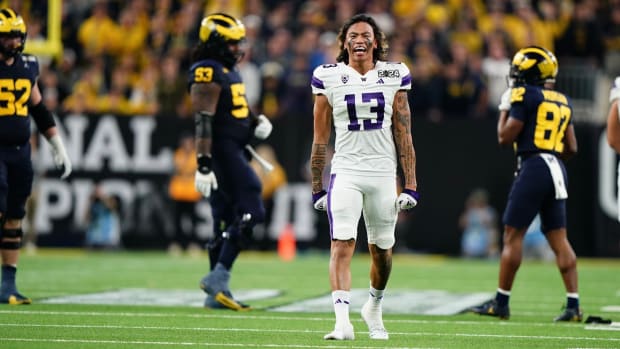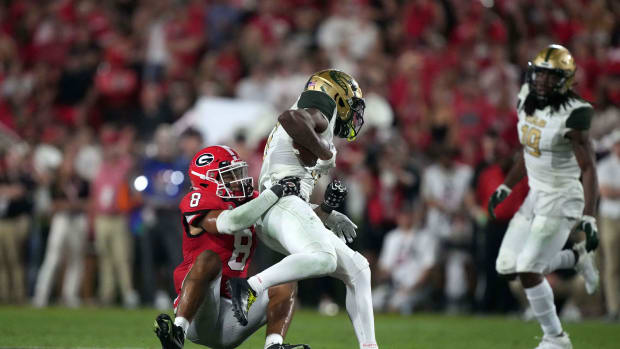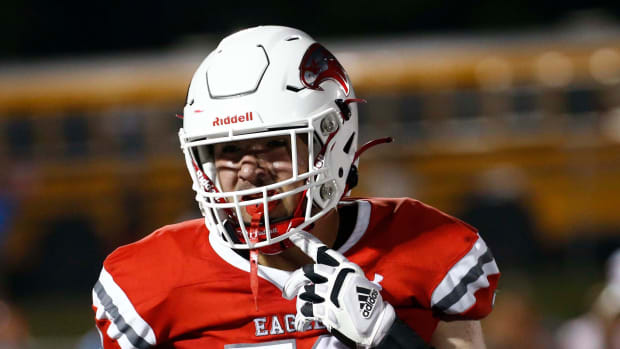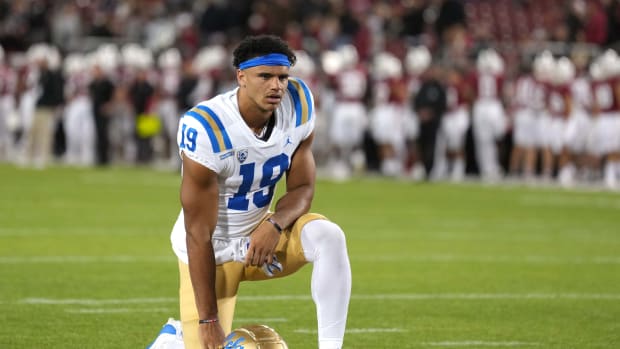With the APR Rankings Released, Who Might Be College Football's Next Five-Win Bowl Team?
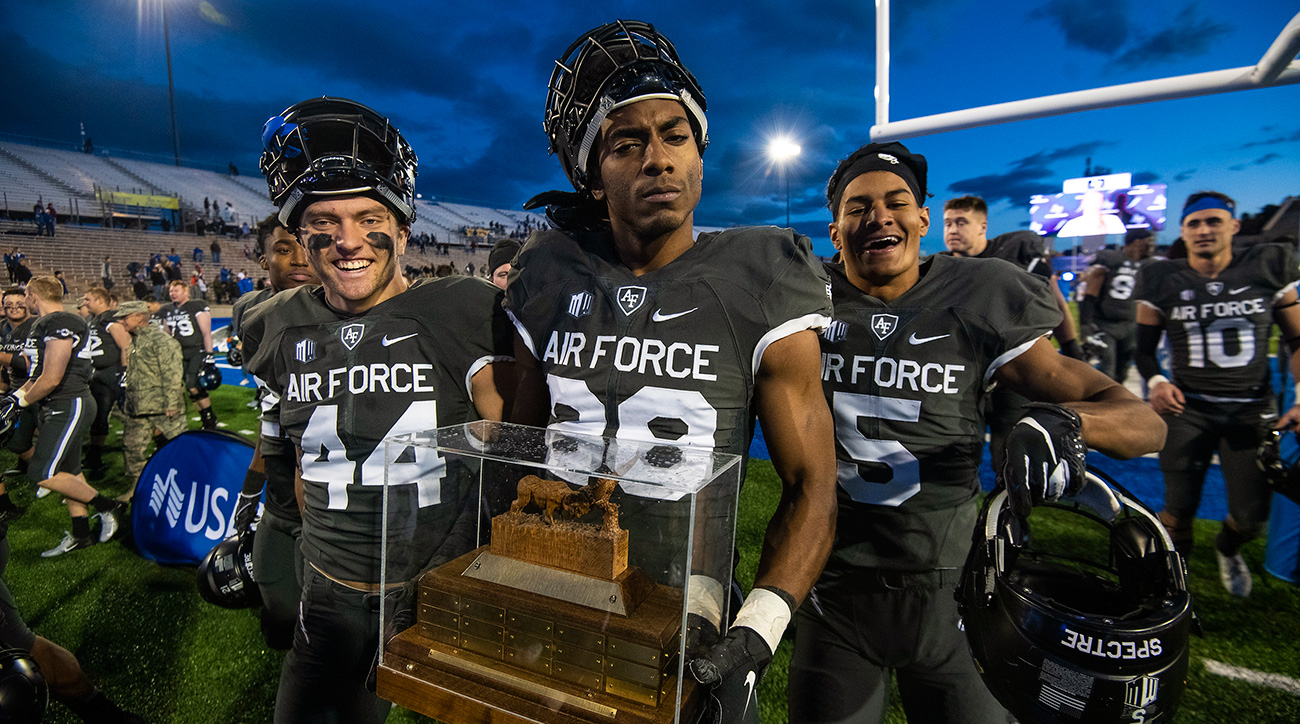
Earlier this month, the NCAA released the latest multi-year Academic Progress Rate (APR) figures, which reflect how well each program retains its athletes and keeps them in good academic standing. Many of the usual suspects topped the list; schools with rich academic traditions dominated the top 20 of the FBS leaderboard, joined occasionally by college football bluebloods with the stability and resources to keep athletes from falling through the cracks.
As offseason checkpoints go, this is a pretty minor one, but it will come up again six months from now as the final week of the regular season approaches and some teams are still scraping for the precious sixth win required to receive a bowl bid. When the bowl lineup expanded in 2015, the NCAA began to allow teams with five wins to fill whatever empty slots remained if there were not enough teams at .500 or better to populate every bowl game, with their order of selection determined by APR. That opened the door for five 5–7 teams to make the postseason in the next two years.
While the past two seasons have produced more than enough six-win teams to fill out the postseason schedule, late-season scoreboard-watching persists for five-win teams looking for a final lifeline into bowl season if the number of teams with at least six wins should fall short of 78. And with the new bowl cycle in 2020 opening the door for as many as 43 bowl games per year in the next decade, we could be running into this situation more often over the next few seasons.
Who are the most likely candidates to be 2019's five-win bowl teams? That's what we're here to examine. First, here are the top 20 FBS programs in the new APR rankings:
Air Force: 997
Northwestern: 996
Clemson: 992
Duke: 992
Navy: 991
Washington: 991
Vanderbilt: 991
Boston College: 989
Nevada: 989
Utah: 989
Wake Forest: 989
Rice: 987
Ohio State: 987
UCF: 987
Stanford: 986
Kansas State: 985
Alabama: 984
Louisville: 984
Pittsburgh: 984
Temple: 983
Cincinnati: 983
Will all of the teams listed above factor into the back end of the bowl picture this year? Of course not. Clemson, Ohio State and Alabama are inner-circle national title contenders that never think twice about bowl eligibility. We can pretty safely throw AAC favorite UCF into that group, as well, along with defending Big Ten West champ Northwestern, which has won at least nine games in three of the past four years and has high hopes for former five-star Clemson quarterback Hunter Johnson in his first season of eligibility after transferring.
Meanwhile, Rice and Louisville are building for the future after two-win campaigns in 2018 and face daunting schedules that will likely leave them outside the pack of five-win hopefuls. And last year, the Pac-12 passed a rule forbidding its 5–7 teams from accepting the leftover bowl bids (Bay Area News Group's Jon Wilner laid out some reasons for that counterintuitive stance at the time), which removes Washington, Utah and Stanford from consideration.
That leaves 11 of the top 20 APR schools that conceivably could get the call if they happen to be hovering just under .500. Some of the teams below won't need any help getting into bowl season, but their fans will all be keeping an eye on each other as December approaches and the bowl picture begins to take shape.
Air Force: The Falcons have finished 5–7 in back-to-back seasons after a run of 28 wins in three years, and there's reason to expect continuity with last year's top two quarterbacks, Isaiah Sanders and Donald Hammond III, back to man Troy Calhoun's hybrid option offense. Air Force's schedule features 10 consecutive games between bye weeks against the likes of Army, Navy and most of the rapidly improving Mountain West, but a third straight year banking on some bowl eligibility luck may be in the cards.
Duke: The Blue Devils have three weeks (vs. North Carolina A&T, at Middle Tennessee and a bye) to recover from what promises to be a brutal season opener against Alabama before diving into ACC play. A mid-November home game against Notre Dame complicates matters, as well, but the smart money always lies with David Cutcliffe coaxing at least six wins out of his charges. Redshirt senior Quentin Harris represents a seasoned replacement for Giants first-rounder Daniel Jones at quarterback, which will help smooth things over on offense as the Blue Devils replace their top two receivers.
Navy: After plunging to 3–10, their worst finish since 2002, the Midshipmen are in uncharted waters as Army has taken over the top spot on the service academy football marquee. Navy can get to six wins by the end of October, but much depends on the overhaul of a defense that was second only to UConn as the AAC's worst and the offense's construction around quarterback Malcolm Perry, who was moved to slotback midway through last season but is now back under center.
Vanderbilt: The Commodores had some unfamiliar quarterback stability over the past few years with Kyle Shurmur, who quietly broke most of Jay Cutler's passing records while in Nashville. Now it figures to be the Ke'Shawn Vaughn show in Nashville, as the electric back shoulders an increased workload for an offense that was at its best when it ran through him. The defense is light on proven playmakers, and the schedule is unrelenting, starting with a Week 1 visit from Georgia. Bowl eligibility could once again come down to the end-of-season rivalry game with Tennessee, which Derek Mason has won three times in a row.
Boston College: Steve Addazio has won exactly seven games in five of his six seasons at BC, and a nonconference schedule that includes Richmond, Kansas and Rutgers seems to set up the Eagles for another bowl trip on the back of AJ Dillon. BC fans should be more worried about their team's bowl-season ceiling than its floor.
Nevada: The Wolf Pack were sneaky good in 2018, beating every Mountain West team they should have and claiming a Pac-12 skin with a September win over Oregon State en route to an 8–5 finish. With almost every key skill player back, the pressure's on whoever Jay Norvell tabs as the starting quarterback to replace Ty Gangi seamlessly with Purdue and Oregon looming in the first two weeks.
Wake Forest: The Demon Deacons routed Duke 59–7 on the final weekend of the regular season to get bowl eligible last fall, and their arrow seemed to be pointing up after a roller coaster season. It looks like chaos will once again reign in the middle of the ACC, which means Wake could be in for another battle for bowl eligibility.
Kansas State: Chris Klieman has the unenviable job of following up K-State institution Bill Snyder, and he will be greeted by a Big 12 with at least two playoff hopefuls in Texas and Oklahoma and plenty of other teams that will push Klieman to maximize his personnel the way Snyder routinely did. (The Wildcats were so thin at running back early this spring that they temporarily moved a punter into the backfield.) Still, the coaching turnover elsewhere in the Big 12 puts within reach the three non-Kansas conference wins K-State will likely need for bowl eligibility.
Pittsburgh: Remember that part about chaos reigning in the middle of the ACC? The Panthers were the primary beneficiaries of last year's mess, sneaking into the conference championship game and finishing an unorthodox 7–7. The Law of the ACC Coastal dictates that it's someone else's turn to enjoy stunning success, which indicates that Pitt won't be so lucky in rebounding from another tough September that includes a trip to Penn State and a visit from UCF.
Temple: After watching Geoff Collins jump to Georgia Tech and being left at the altar by new Miami coach Manny Diaz, Temple is putting its four-year bowl streak in the hands of new coach Rod Carey. The AAC's lower tier should give the Owls some cushion if there's any regression.
Cincinnati: The Bearcats' 11–2 season in Luke Fickell's second year didn't feel like a fluke. After the program’s first AP Top 25 finish since the Butch Jones era, Cincy returns more than enough talent to be UCF’s primary challenger in the AAC East once again. Even with games against UCLA and Ohio State to open the season, the Bearcats won’t be sweating out win No. 6.

